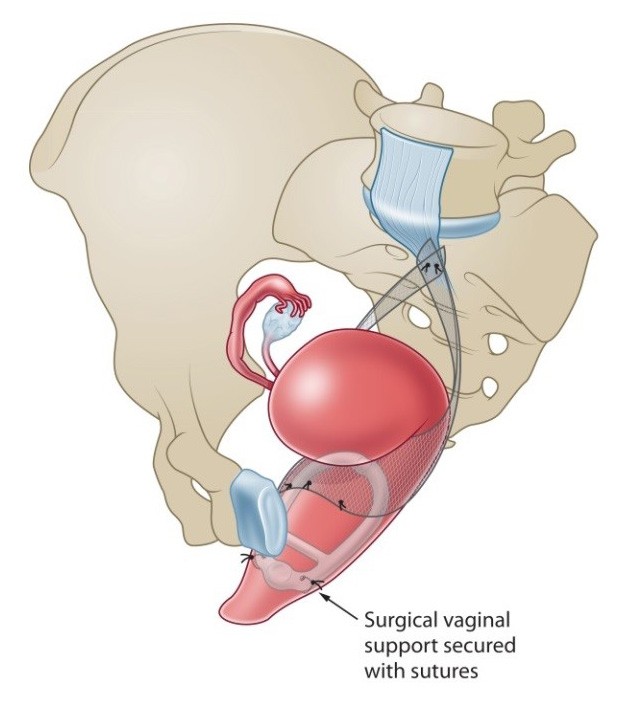Robot assisted Sacral Hysteropexy
Robot-assisted sacral hysteropexy is an operation that suspends the vagina or uterus, using a synthetic or biological graft, from the front of the sacrum (tail bone). This provides support for the uterus and upper part of the vagina. A repair inside the vagina may also be required at the same time. The operation can be performed in combination with other procedures. This operation is usually reserved for women with advanced prolapse of the uterus who wish to retain their uterus or when previous surgery to support the uterus has failed.
What happens during surgery?
The surgery is performed under general anaesthesia (you are completely asleep). The operation is performed using the da Vinci robotic system (keyhole surgery). The uterus is suspended with a your own tissue (fascia lata) or a synthetic graft from a ligament on the front of the sacrum (tail bone). In some cases sutures rather than a synthetic or fascia lata graft are used. This provides very strong support for the uterus. A surgical repair inside the vagina may also be required, depending on the type of prolapse you have. At the end of the operation, a catheter will be inserted into the bladder to drain urine. This will remain in place overnight. A cystoscopy (looking inside the bladder with a telescope) will usually be performed at the end of the surgery to check that no damage has occurred to the bladder or ureters (the tubes running from the kidneys down to the bladder).

The illustration above demonstrates the uterus suspended from the sacrum by a graft. A surgical vaginal support device (S-POP) is placed into the vagina at the end of end of surgery and is removed 3 to 5 weeks after surgery.
 Dr Carey will be happy to answer any questions you may have and can give more specific advice. Before deciding to have surgery, you should read carefully all the information about your operation and consider obtaining a second opinion.
Dr Carey will be happy to answer any questions you may have and can give more specific advice. Before deciding to have surgery, you should read carefully all the information about your operation and consider obtaining a second opinion.If you experience complications after you leave hospital, contact Dr Carey or the nursing staff on 1 West at the Epworth Freemasons Hospital for advice. In an emergency you may attend the Royal Women’s Hospital, Parkville or Epworth Hospital, Richmond emergency department or attend your closest hospital emergency department.
